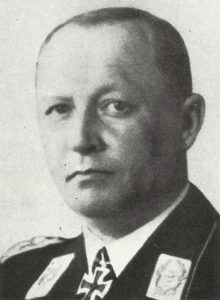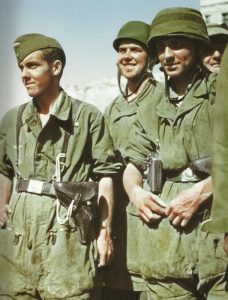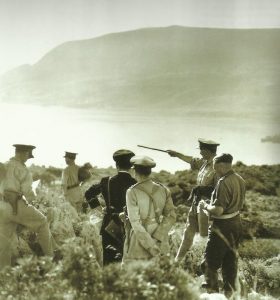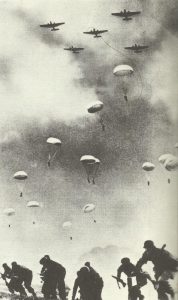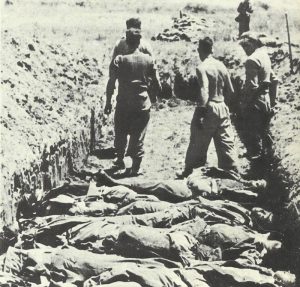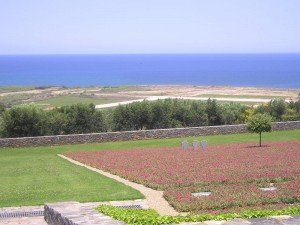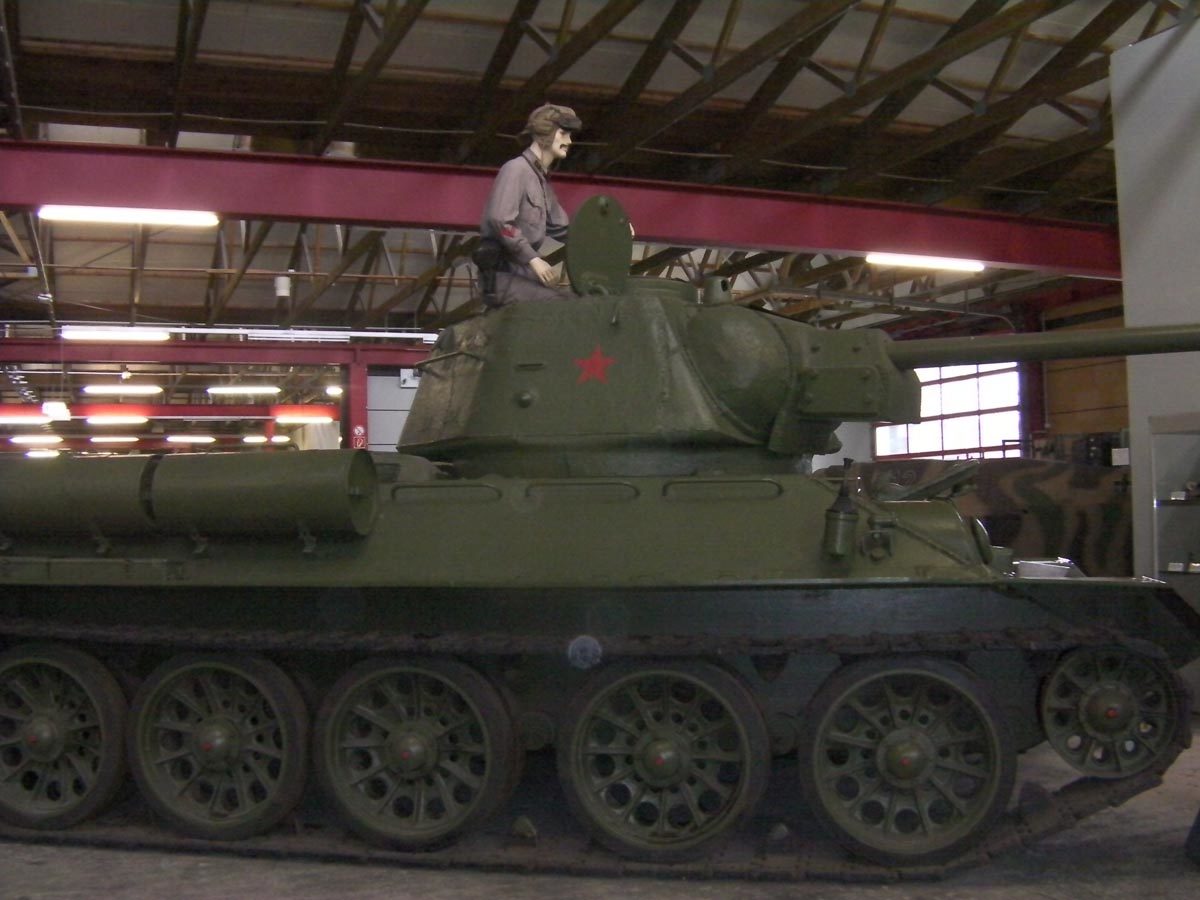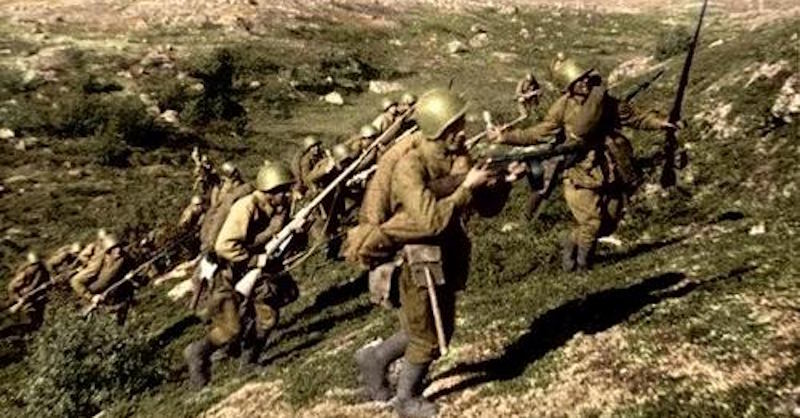Operation Merkur (Mercury), the ‘Battle of Crete’.
German Plan of Attack and assault troops, deployed forces, intelligence, the fighting and losses on Crete.
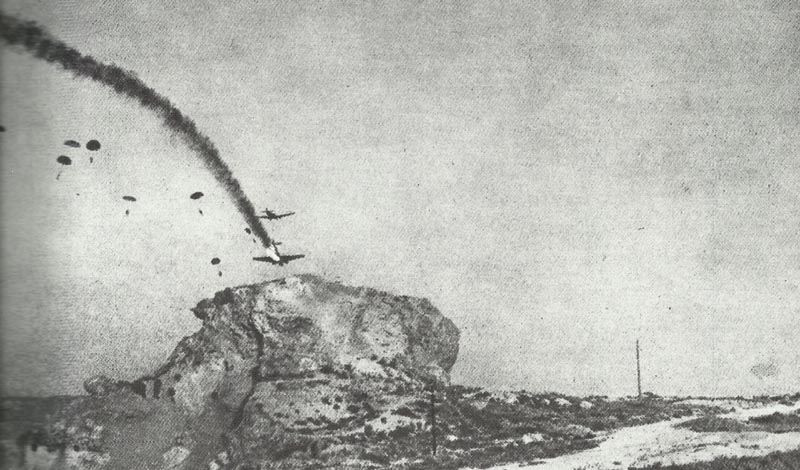
The German airborne invasion of Crete in May 1941
Table of Contents
Overview
Operation Mercury (Unternehmen Merkur), the German airborne invasion of Crete in May 1941, represents one of the most significant airborne operations of World War II.
Background:
– Following the successful German invasion of mainland Greece in April 1941, Allied forces (British, Commonwealth, and Greek) evacuated to Crete.
– The island held strategic importance as a potential Allied air and naval base that could threaten German operations in the Balkans and North Africa.
The German Plan:
– Commanded by General Kurt Student, the plan called for a primarily airborne assault using paratroopers (Fallschirmjäger) and glider-borne infantry.
– The invasion began on May 20, 1941, with approximately 13,000 paratroopers and 10,000 mountain troops to follow by air and sea transport.
The Battle:
– Initial German drops suffered heavy casualties as Allied forces were expecting the attack.
– Key drop zones targeted Maleme airfield, Chania, Retimo, and Heraklion.
– Despite fierce resistance, the Germans captured Maleme airfield on May 21, providing a crucial foothold for reinforcements.
– Allied forces under General Bernard Freyberg were eventually forced to retreat southward.
– By June 1, the evacuation of Allied troops was complete, leaving Crete in German hands.
Significance:
– First primarily airborne invasion of a defended island in military history.
– Pyrrhic victory for Germany with approximately 3,700 Fallschirmjäger killed.
– Hitler never again authorized a large-scale airborne operation due to the high casualties.
– Demonstrated both the potential and limitations of airborne warfare.
– Allied forces evacuated approximately 18,000 troops, but lost 1,800 killed and 15,000 captured.
The battle provided valuable lessons for Allied airborne operations later in the war, including D-Day and Operation Market Garden.
Operation Merkur
The same time as on April 21, 1941, in Larissa the commander of the Greek forces, General Papagos, capitulated and the Balkans campaign so went almost to the end, a briefing took place at the advanced Führer Headquarter on the Semmering, which dealt with whether Crete should be conquered.
The aim of the meeting was to clarify the question for which target the paratroops should be used: Malta or Crete. In the discussion, in which Jeschonnekk, Jodl and Keitel were present, was also Luftwaffe General Student involved. He pointed out that such a strong position as Crete should not be controlled by the enemy.
The coasts of Crete were controlled by the combative British Mediterranean fleet, including appropriate air protection. Thanks to its two airfields the British could control from the island – as unsinkable aircraft carrier – the entire eastern part of the Mediterranean and the Balkans.
In the hands of the Germans, however, they would definitively then rule over the Aegean Sea, because with it the British deployment in the eastern Mediterranean would be put to an end. Crete could also serve the Luftwaffe as a starting point for other operations.
For the final decision eventually Hitler was summoned and Student contributed to him that a conquest of the island is possible from the air. Then Hitler decided that the attack on Crete should be performed.
Student then worked out a detailed plan of attack, which was then approved on April 25 by Hitler’s ‘Directive No 28’ as ‘Operation Merkur’.
The command of the operation was given to General Löhr, the commander of Air Fleet 4, which ensure that all Air Force and Army units were under his control. These included primarily the VIII. Flieger Corps under the command of Air General von Richthofen, which was responsible for the air support of the operation, and the XI. Air Corps under General der Flieger Kurt Student, which would perform the actual airborne operation.
Since the beginning of 1941 the 7th Air Division under Lieutenant-General Süssmann and the 22nd (LL) Infantry Division (LL for ‘Luftlande’, means ‘air landing’) were parts of the XI. Air Corps. Since the latter was not available for the operation on Crete, in their place the 5th Mountain Division under Major General Ringel and parts of the 6th Mountain Division were given to General Student.
The leadership of the necessary air transport units was in the hands of Major General Conrad. The light transport ships for the provided sea transport were under Admiral Schuster. The date for the start of the operation, finally, 20th May was declared.
German Plan of Attack
Since not enough transport aircraft were available to all land forces at the same time, the plan was to take the four targets with a total of three groups in two waves.
The first wave was to land at 07.15 am in the section Maleme (West Group) and in section Chania (Group Center); the second wave was to Y-time plus 8 hours – i.e. at 15.15 hours – jump near Rethymno (Group Centre) and Heraklion (Group East). General Loehr was convinced that all the strategically important points could be taken in one day.
The command of the first wave of the West Group was given to General Meindl, commander of LL (air landing) Assault Regiment, a powerful special unit. Meindl paratroops were trained for such risky operations and experienced in the use of gliders.
The Group Centre was under the command of Major General Süssmann, while the Group East was commanded by Lieutenant General Ringel of the mountain troops.
Crucial to the success of the operation was the rapid seizure of airfields and the main cities of the island, so Maleme and Chania. The units in the East should take the cities Rethymno and Heraklion including their airfields – and all this in a single day. An ambitious, bold and risky plan.
The German assault troops
For this new operation the entire 7th Air Division under the command of Major General Süssmann with 11,500 men, and the Airborne Assault Regiment Meindl which comprised about 3,500 men was under his command. This force war increased by army troops, which were composed mainly of mountain troops of the 5th Mountain Division and several battalions of the 6th Mountain Division.
The air transport for these troops, their weapons and equipment was the task of Major-General Conrad, who succeeded to deploy 533 transport aircraft Ju 52/3m and 70 gliders DFS 230.
General von Richthofen’s VIII Air Corps had the mission to protect the transport aircraft en route to and from Crete and to attack recognized enemy positions on the island. For this task 280 bombers, 220 fighters and heavy fighters, 150 dive bombers and 40 reconnaissance aircraft were available to him.
For the transfer of parts of the mountain troops, of supplies and heavy weapons to Crete by sea, two squadrons of motor sailer and two steamers squadrons were provided (the steamer squadrons were finally not placed), which should be formed by ‘Admiral Southeast’.
XI Air Corps:
- Corps troops (among other, Para AA-MG battalion, Para Medical Abteilung, Transportation coy)
- 7 Air Division (lieutenant-general Süssmann): Paratroop regiments 1,2 and 3, Paratroop machine-gun battalion, Paratroop Pionier (combat engineers) battalion, Paratroop artillery Abteilung, Paratroop anti-tank Abteilung.
- Airborne Assault Regiment 1 (Major-General Meindl)
- 5 Mountain Division (General Ringel): I, II und III/GJR (mountain regiment) 85; plus I, II and III/GJR (mountain regiment) 100, two Abteilungen of Mountain artillery regiment 95, Mountain Recon Abteilung 95, Mountain AT Abteilung 95, Mountain Pionier (combat engineers) battalion 85, Mountain Signal Abteilung 95
- 6 Mountain Division (Lieutenant-General Schörner): Staff and I/GJR (mountain regiment) 141, II GJR (mountain regiment) 143 and II/GAR (mountain regiment) 118.
Transport units:
- Kampfgeschwader z.b.V. 1 (Lieutenant-Colonel Henning Wilke): Staff (at Dadion), I Group (Major Witt in Megara), II Group (Lieutenant-Colonel Drewes) at Megara. In addition, subordinated I and II Group of Kampfgeschwader z.b.V.172 at Corinth.
- Kampfgeschwader z.b.V.2 (Colonel von Heyking): Staff, Kampfgruppe z.b.V.60 (Major Hammer), Kampfgruppe z.b.V.101 (Lieutenant Mund), Kampfgruppe z.b.V.102 (Captain Endmann), all at Topolia.
- Kampfgeschwader z.b.V.3 (Lieutenant-Colonel Buchholz); Kampfgruppe z.b.V.40 (Major Deutsch), Kampfgruppe z.b.V.105 (Major Wenning), Kampfgruppe z.b.V.106, all at Tanagra, equipped with Ju 52. Additional Staff (Major Wilke) and I Airborne Squadron (Major Stein) with gliders DSF 230.
VIII Air Corps (Air General von Richthofen):
- KG 2 (Colonel Rieckhoff): Staff, I and III Group at Tatoi, with Do 17 equipped.
- III/KG 3 (Captain Rathmann) at Tatoi (together with KG 2 124 bombers)
- II/KG 26 (Major Beyling) at Eleusis, with 40 He 111 bombers equipped.
- III/KG 30 (Major Schumann) at Eleusis with 40 bombers.
- Sturzkampfgeschwader (Dive-Bomber) 2 (Colonel Dinort): Staff and III Group at Mykene, I Group at Molaoi.
- I/Sturzkampfgeschwader (Dive-Bomber) 3 (Major Siegel) at Larissa (both Stuka units have total 124 Ju 87 Stuka).
- Zerstörergeschwader (Heavy Fighter) 26 (Colonel Schalk): Staff, I and II Group at Argos. Equipped with total of 40 Me 110.
- Jagdgeschwader (Fighter) 77 (Major Woldenga): Staff, II and III Group at Moaoi. Equipped with 84 Bf 109.
- Lehrgeschwader (Combat Training) 1: Staff, I (Fighter) und II (Bomber) Group at Eleusis.
- I (Fighter Combat Training)Lehrgeschwader 2: I Group at Molaoi with Bf 109 E.
- 4/Aufklärungsgruppe (F) 121 (Reconnaissance): 4 Squadron at Eleusis with long-range recon planes.
- Aufklärungsgruppe (See) 126 (Sea reconnaissance)(Colonel Kaiser): Staff and 1 Squadron at Nauplia (total in both recon units 60 planes).
- Commando Aeronautica Egeo (Italian air force Agean):
41 Gruppo BT (12 Stormo) with 204 and 205 Squadriglia (Squadron), equipped with SM.84 and SM.79 bombers.
50 Gruppo BT (16 Stormo) with 210 and 211 Squadriglia, equipped with Cant Z1007bis dive-bombers.
92 Gruppo BT (39 Stormo) with 200 and 201 Squadriglia, equipped with SM.81 and SM.82.
95 Gruppo BM (35 Stormo) with 231.Squadriglia of the Navy, equipped with Cant Z1007bis.
161 Squadriglia CM of the Navy, equipped with Fiat CR.42.
163 Squadriglia CT, equipped with Fiat CR.32 and Fiat CR.42.
172 Squadriglia BT, equipped with Cant Z1007bis.
281 Squadriglia AS, equipped with SM 79 Sparvierio torpedo-bombers.
Army troops:
- Kradschützen (motorcyclist) battalion 55 (transfer to Crete on May 23)
- Flak-Abt. (anti-aircraft Abteilung) 73 and 4./le.Flak-Abt. (light AA Abteilung) 73 (transfer to Crete May 25-26)
- Flak-Btl.(mot) (motorized anti-aircraft battalion) (transfer to Crete on May 24)
- Panzer-Rgt. (armored regiment) 1 of 5th Panzer Division (transfer to Crete on May 27)
German Navy, ‘Admiral Southeast’ (Admiral Schuster)
- two light motor sailer squadrons (80 confiscated Greek motorboats incl crew):
Group 1 (group Maleme under Captain Oesterlin) with 25 motor sailers from Piraeus to Maleme with 2,250 men (I.GJR 100 mountain troops without heavy vehicles, 2 batteries I Flak-Lehr/anti-aircraft combat training regiment, remaining groups of the 7th Air Division, supplies and motorcycles). Escorted by Italian torpedo boat ‘Lupo’ (Lieutenant-Commander Mimbeli).
Group 2 (group Heraklion under Lieutenant-Commander Lipinski) with 38 ships from Chalkis to Heraklion (not per airlifting possible elements of FJR 1 and the 5th Mountain Division without heavy vehicles, one battery I/Flak-Lehr-Regiment). Escorted by Italian torpedo boat ‘Sagittario’ (Lieutenant Fulgos).
Deployed troops on Crete
Of the 22,000 employed troops on the German side were 8,060 paratroopers, of which 750 should land with gliders. The reinforced 5th Mountain Division had been sent into battle from May 21, by air and sea transport.
Forces:
Deployment | Germans | Allies |
|---|---|---|
Maleme | 1,860 | 11,859 |
Suda Bay | 2,460 | 14,822 |
Rethymno | 1,380 | 6,730 |
Heraklion | 2,360 | 8,024 |
Headquarter 'Creforce' | - | 405 |
TOTAL | 8,060 | 41,840 |
later reinforcements | 13,980 | 800 |
TOTAL | 22,040 | 42,640 |
Allied Forces at Maleme and Chania
HQ NZ Division
HQ 5th and 10th NZ Infantry Brigade
18th, 20th, 21st, 22nd, 23rd and 28th (Maori) NZ Infantry Battalion
Russel Force (200 trooper NZ cavalry)
Royal Perivolians (mixed group of soldiers without main units)
Welch Regiment
8th Greek Infantry Battalion
Allied Forces at Rethymno:
HQ 19th Australian Infantry Brigade
2/1, 2/7, 2/8 and 2/11 Australian Infantry Battalion
Greek 4th and 5th Infantry Battalion
2/1st Australian MG Coy
800 men Greek gendarmes
Allied Forces at Heraklion:
HQ British 14th Brigade
2nd Battalion Yorks&Lancashire, 2nd Battalion Leicester, 2nd Battalion Black Watch, 2/4th Australian Battalion
Greek 3rd and 7th Infantry Battalion
Greek Replacement and Training Battalion
Intelligence
Already since May 17 ‘Creforce’ expected an invasion by 25,000-35,000 German troops who would be airlifted. Additionally, it was expected to 10,000 further men, which should land from seaside under the cover of Italian warships.
In contrast, the German side did not know much about their opponents, which is also reflected in the operational command of the XI Air Corps from May 12, while admitting that the situation in Crete is little understood.
Moreover, the enemy positions were not recognized, but only the well-designed dummy positions. Thus, the first airstrikes previous to the airdrops went naturally into the void.
The paratroopers were not only surprised by the strength of the British, Commonwealth and Greek troops on the island, but also of the hostility of parts of the population. Had the British not committed very strange tactical mistakes, then the Crete operation could easily end in the first few hours in a disaster for the Germans.
Battle of Crete
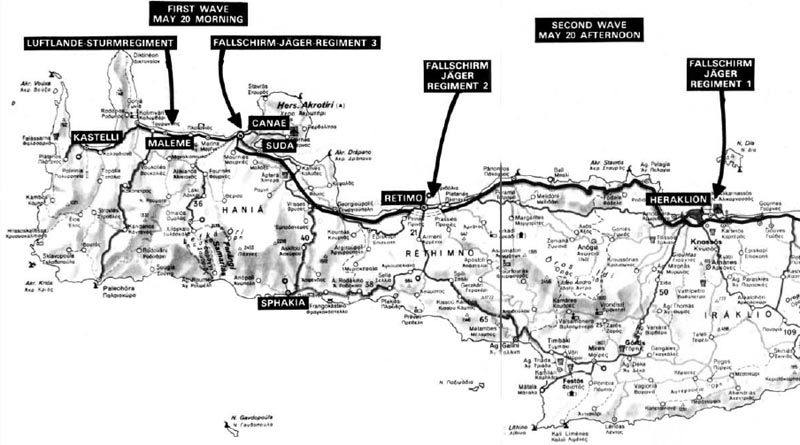
The New Zealander at Maleme were unable to build a cohesive defensive position because of incessant air strikes and a lack of radio equipment. At night, the 22nd battalion was forced to abandon the airfield and return toward the 23rd battalion. By contrast, the Germans were stopped at Galatas, and also the paratroopers landed in Rethymno and Heraklion failed to capture these airfields.
The next morning, the Germans occupied the airfield of Maleme, without encountering direct resistance. The New Zealanders tried in vain to recapture the airfield and were thrown back towards Platanias. The two German battle groups now began to coordinate their operations and proceed to Chania.
In the second phase of the battle, the Allies tried to hold the bay of Suda while the Germans tried to further expand their positions. On May 25, Galatas fell, and on May 27, Freyberg had to recognize that the Allied positions were not to hold on. He retreated then to the south. Meanwhile, the Germans had taken Chania and Suda and urged, to relieve their troops in Rethymno and Heraklion.
From May 29 to 30, the Allies held in Sfakia a bridgehead to evacuate their troops; the crew of Rethymno but was forced to surrender. The following day, the last soldiers were evacuated, and the Germans entered Sfakia.
The Allies had been able to save 17,000 troops, their losses amounted to 17,800 men. The Germans lost about 7,000 dead, missing and wounded – nearly a third of their landing troops. They should never perform an airborne operation on this scale.
Losses on Crete
Allied losses:
Nationality | Killed | Wounded | |
|---|---|---|---|
British | 797 | 263 | 6,576 |
Australians | 274 | 507 | 3,102 |
New Zealanders | 671 | 1,455 | 1,692 |
Lost on sea | c.2,000 | - | - |
TOTAL | 3,742 | 2,225 | 11,370 |
The loss of the Greek army could not be found. It is estimated that a total of 5,000 soldiers were lost (killed, wounded, PoWs).
Germans:
Arm of Service | Killed | Wounded | Missed |
|---|---|---|---|
Paratroopers | 1,653 | 2,046 | 1,441 |
Mountain troops | 262 | 458 | 318 |
Air crews | 76 | - | 236 |
TOTAL | 1,991 | 2,504 | 1,995 |
And although the conquest of the island was a great success, since Germany thus came into possession of a valuable strategic point in the Mediterranean, Hitler decided on 17 July 1941: ‘Crete has proved that the days of the paratroops are over. The parachute arm is just a pure surprise weapon. The surprise factor has now worn.’
And indeed, the German paratroops was henceforth rarely used for airborne operations.
For the British Empire, the loss of Crete presented not only a military defeat, but it was a real humiliation: The British Expeditionary Force, with more than 40,000 troops, which were expecting the Germans in well-built and camouflaged positions deployed over the entire northern part of the island and which were supported by a powerful naval force, and even in spite of their considerable numerical superiority and exact knowledge of the enemy’s plans, had not been able to defend the island successfully.
Given the losses of the Royal Navy in particular: sunken were three cruisers, seven severely damaged, eight destroyers sunk and nine damaged. Additional, an aircraft carrier and two battleships out of action.
The German military cemetery near Hill 107 at Maleme on Crete today.
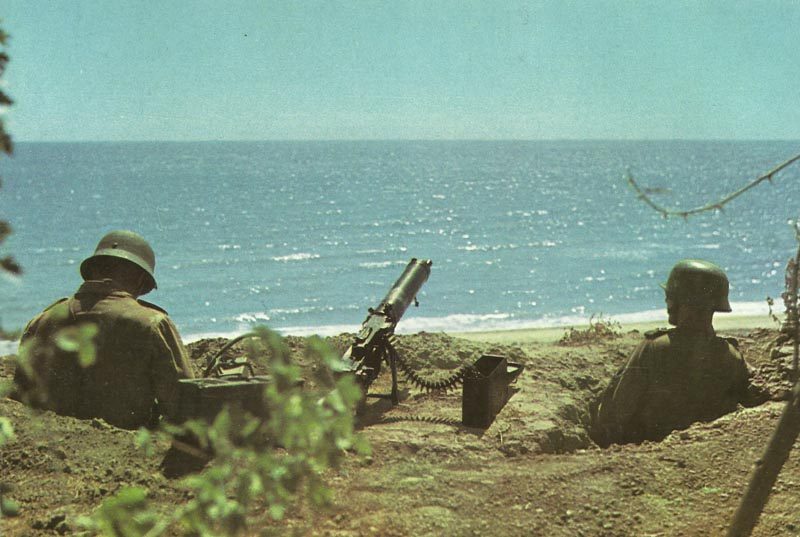
References and literature
Der Kampf um Kreta – Die Geschichte einer Invasion aus der Luft (Franz Kurowski)
Fallschirmjäger auf Kreta (Jean-Yves Nasse)
The Grainville Raid, Invasion of Crete 1941 (After the Battle No. 47, Winston G. Ramsey)
The Fall of Crete (Alan Clark)
Crete – The Battle and the Resistance (Anthony Beevor)
Crete 1941 – Germany’s lightning airborne assault (Osprey/ Peter D. Antill)
Battle of Crete (George Forty)
Der 2. Weltkrieg (C. Bertelsmann Verlag)
Zweiter Weltkrieg in Bildern (Mathias Färber)




